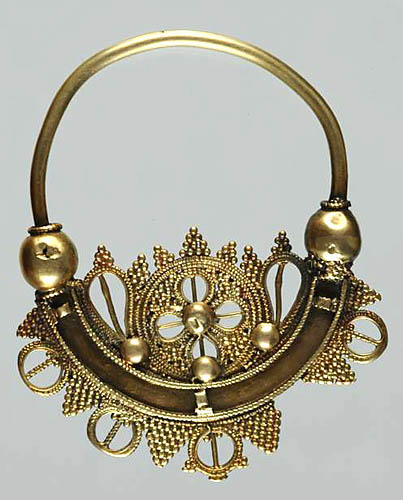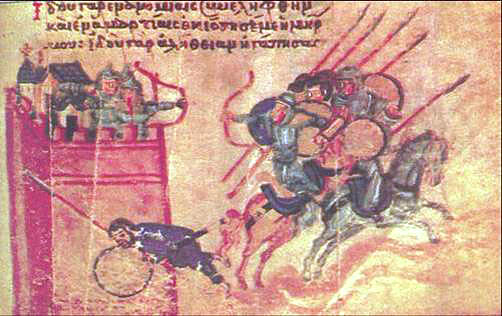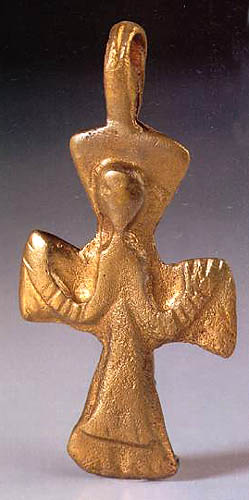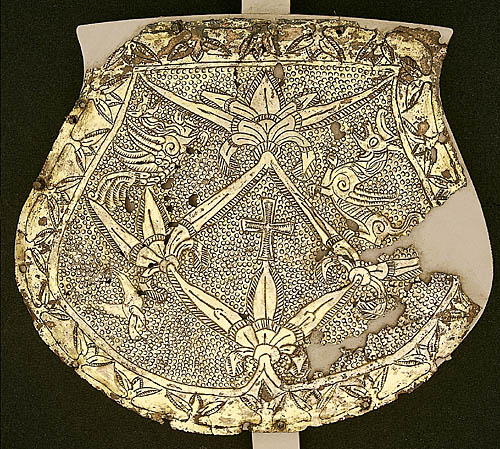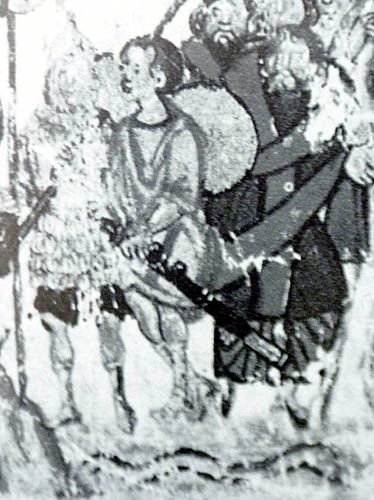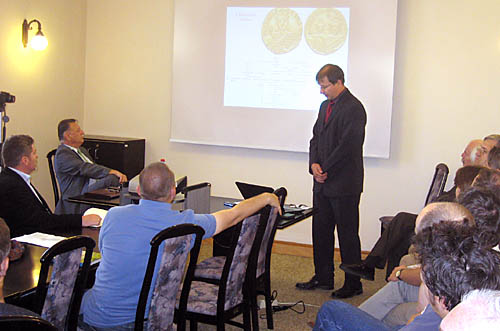
Council Hall of HAS RCH Institute of History
From the 9th century one of the early Hungarians neighbours’ of crucial importance – sometimes as an ally, sometimes as enemy – was Byzantium. The empire of Leo the Wise and later his son, Constantine Porphyrogennetos regarded the Hungarian Principality, led by Álmos and his heirs, as an unpleasant but sometimes very useful neighbour. The multi-faceted relationship of the two states is mirrored by the archaeological findings. At this period Byzantium was a thriving empire. However, Hungarians were far from being the chief concern of Byzantine leaders.
The presence of Byzantine findings cannot be explained merely by Hungarian campaigns towards Byzantium, nor can it be only a trace of alliances and diplomatic relationships. Further explanations are also possible like commercial relations, missionary work or wanderings of craftsmen or the spreading of professional knowledge of making such objects.
The lecture addressed this issue by analyzing archaeological sites (in Fonyód, Harta, Nyitra, Csekej, Himód and Tiszakeszi) and types of findings to introduce the changing historical visions on the relationship of early Hungarians and the Byzantine Empire. A type of object could apparently persist even for decades. International research attempts to separate objects that are surely of Byzantine origin from local imitations. At first sight it seems there are a lot of such findings within the Carpathian Basin; however, analyzing them sorted into types shows clearly their very limited numbers. The cultural origin of the imagery appearing on these objects is also questionable.
Apart from acquiring objects and techniques Hungarians also had a transmitting role; indirect examples of this phenomenon are sabres and Nordic wear-irons for swords.
As for the relics originating from the alleged missionary work of Byzantine priests in Hungary, these religious objects do not always indicate a real presence of Christendom since crosses were common ornaments on pagan jewellery and amulets as well, e.g. in the ancient Scandinavia.
Lastly, Péter Langó emphasized that the above picture can be changed at any time by a more extensive publication of the findings.
After the lecture and its discussion Pál Fodor, acting Director General of HAS RCH announced that recently the thematic group had successfully won support at an academic tender therefore they possessed the financial and other means to create and maintain a website introducing pre- and early Hungarian history research, a list of early medieval archaeological sites, and to collect every genuine linguistic monument written in the Székely writing. Also, a large-scale conference about pre- and early Hungarian history is going to be organized next April.
András Péterfi




